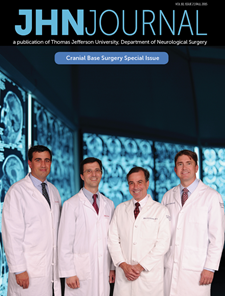Abstract
Since the introduction of extended endoscopic cranial base surgery, postoperative cerebrospinal fluid (CSF) leak has been a formidable and troublesome issue resulting in complications such meningitis, pneumocephalus, and the need for additional surgical interventions. Establishment of a watertight cranial base reconstruction is the most critical step in preventing postoperative CSF leakage. Historically, various free grafts, both synthetic and autologous, were utilized as repair materials for reconstruction of the cranial base defect often in combination with temporary CSF diversion. Free grafts are often sufficient for repair of small low flow, low pressure dural defects. High postoperative CSF leak rates reported in the initial endoscopic skull base literature are evidence that free grafts do not provide a reliably competent repair for large defects or direct high-flow CSF leaks. The introduction of the Hadad-Bassagasteguy vascularized nasoseptal flap has significantly reduced the reported CSF leak rate with a recent meta-analysis reporting that use of the vascularized flap is associated with a 7% rate of postoperative CSF leakage compared to 16% with free grafts alone for large dural defects.6 Since the initial description of the vascularized pedicled nasoseptal flap in 2006, many surgeons have developed a variety of alternative vascularized flaps for endonasal cranial base reconstruction. In this article, we summarize and compare several of the most clinically useful vascularized flaps including their harvest technique, indications and limitations, and potential complications.
Pages: 28-31
Recommended Citation
Do, MD, Hyunwoo; Farag, MD, Alexander; Kshettry, MD, Varun; Nyquist, MD, Gurston G.; Rosen, MD, Marc R.; Evans, MD, James J.; and Farrell, MD, Christopher J
(2015)
"Endonasal Vascularized Flaps For Cranial Base Reconstruction,"
JHN Journal: Vol. 10:
Iss.
2, Article 8.
DOI: https://doi.org/10.29046/JHNJ.010.2.004
Available at:
https://jdc.jefferson.edu/jhnj/vol10/iss2/8

